There comes a time about now in New Orleans when Spring feels almost gone and the beautiful displays of the very first native flowers are going to seed. Some of them will continue to bloom for some time, but the first flowers have faded, dried and turned brown….ripe for collecting! On almost every plant out there, it is best to wait until seeds have completely dried on the plant before collecting them (just like nature would do it). It also makes the job much easier. If the seedheads are not completely dry, it might help to lay them out on a sheet pan and store them in paper bags to be sure they won't mold once put away.
Of course, you don't have to collect seeds from your plants. One of the best reasons to grow natives is that the seeds provide valuable nutrition to birds and other animals. You can absolutely leave the seeds on the plant to disburse themselves naturally, especially if you would like some to volunteer in that same spot next year. We like to do a bit of both. With native plants often in short supply, it’s nice to save some seeds to scatter out in another space or plant in containers, or better yet, to share with others. We have heard it said that you should plant seeds when nature would have planted them. That may still mean that they don't sprout until nature would have them sprout, and you still may not have new plants until next Spring. Seed germination varies widely and by circumstance….no better time to start learning!
Just a few native plants that we are collecting dried seed from right now in late May are Winecups, Callirhoe species, Heals All, Prunella vulgaris, Columbine, and Coreopsis lanceolata because it is one of the earliest Coreopsis and therefore almost finished its cycle.
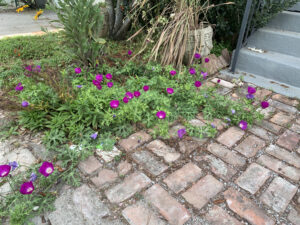
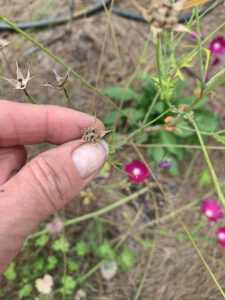
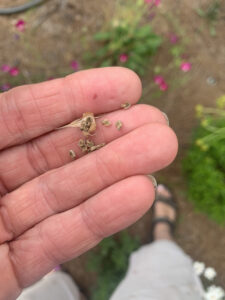
Winecups are one of the showiest natives because of their brilliant pink color. They are also very deep-rooted, long-lived and resilient plants that can tolerate full, blasting roadside-type sun and poor soil. They bloom over an extended period but as new flowers are still blooming, some seeds are already ready to collect.
Prunella, Heals-All or Self-Heal, has a long history and has become one of our favorite low spreading, perennial natives. The flowers are nearly finished now and the flower bracts are drying in place almost ready to harvest for future sowings.

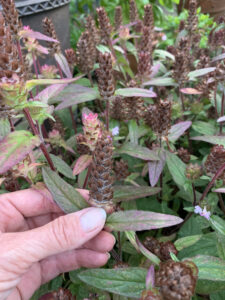
These dried bracts are very tenacious and hang on for a long time, unlike some other plants, so there’s no rush to collect….they will be there in a few weeks just the same and the drier ALL of the seedheads are, the better for collecting and storing.
Columbine is a delightful and showy early Spring native for us. Hinckley’s Columbine has large yellow blooms while Columbine canadensis has red and yellow smaller blooms.
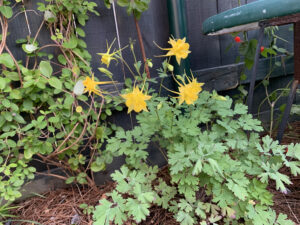
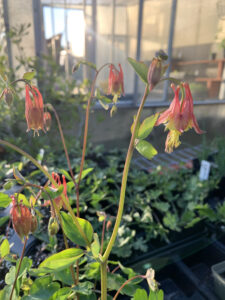
Either species has just about finished and many of their seedheads will be dry and ready to tip over and dump out shiny black seeds.

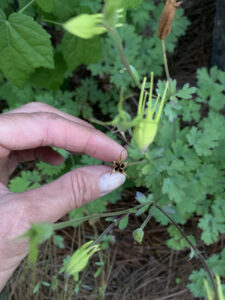
Lastly, if you were lucky enough to have been to one of our Native Plant Giveaways this Spring, you may have walked away with one of our earliest native Coreopsis species, C. lanceolata.
Lance-leafed Coreopsis has large, toothed, bright yellow flowers and makes a great show. It’s dry seedheads pour out dozens of dark brown seeds when you turn them upside down. This is how they readily re-seed more plants into your garden and they will easily grow wherever you scatter them.
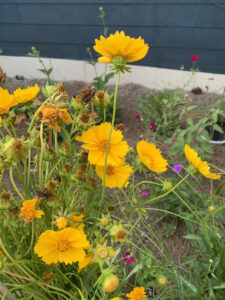
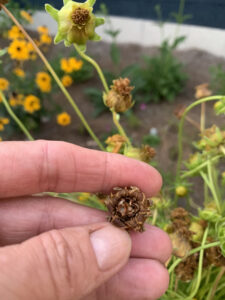

There are so many more blooming plants to come in the next few months and surely many that might be ready now that we did not cover…..what are you collecting seeds from right now in your native garden?

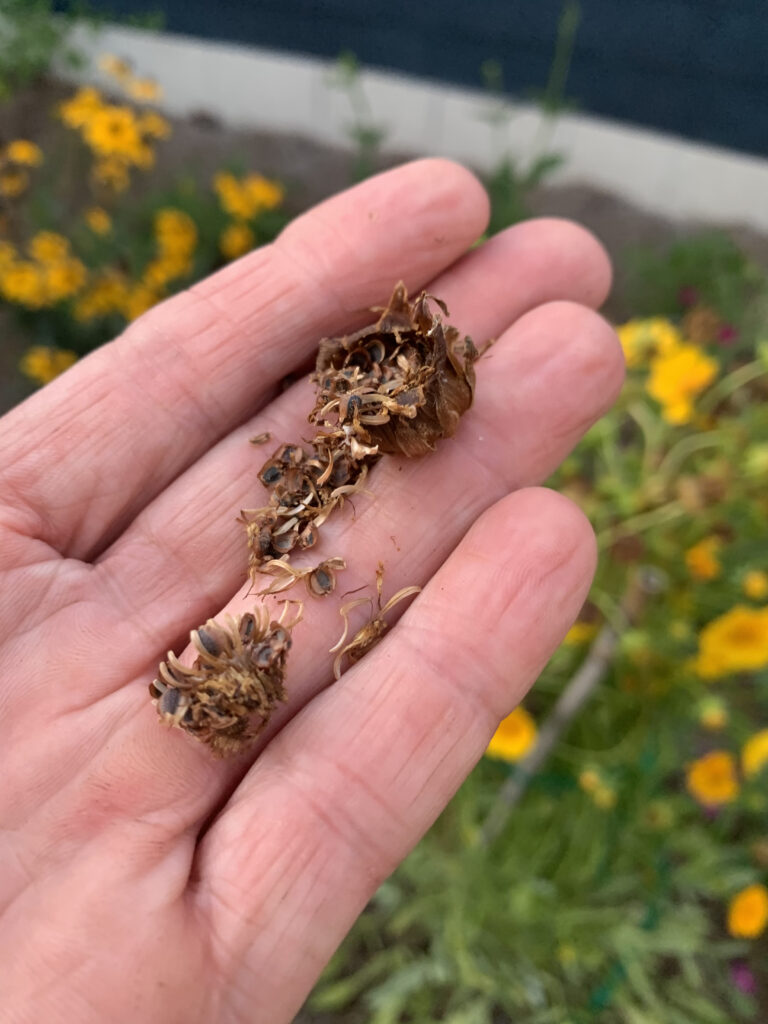

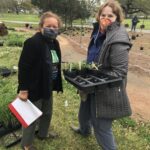
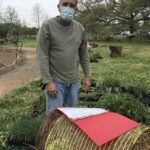
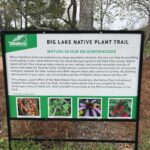

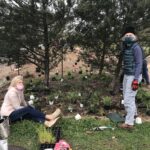
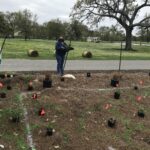

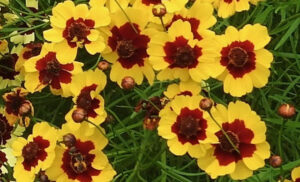
 Coreopsis tinctoria, also known as Plains Coreopsis, is an annual species, lasting only one season, and can be seen growing wild on disturbed roadside areas, but is also a gardener’s favorite. These fast-growing plants can be direct seeded into garden beds and pots or planted out as plants. They always reward with a multitude of bi-colored flowers with yellow petals, red-brown at the base and brown center discs. The flowers are carried above airy, finely cut foliage on tall plants at 2-4 feet. They respond very well to pinching or cutting back when young to produce a denser, more branched plant. There are variations of C. tinctoria that present very pale yellow, ivory or mahogany red petals. Again, C. tinctoria prefers well drained and full-sun situations and can handle poorer soils. It is easy to collect seed or just allow this plant to re-seed itself in the garden.
Coreopsis tinctoria, also known as Plains Coreopsis, is an annual species, lasting only one season, and can be seen growing wild on disturbed roadside areas, but is also a gardener’s favorite. These fast-growing plants can be direct seeded into garden beds and pots or planted out as plants. They always reward with a multitude of bi-colored flowers with yellow petals, red-brown at the base and brown center discs. The flowers are carried above airy, finely cut foliage on tall plants at 2-4 feet. They respond very well to pinching or cutting back when young to produce a denser, more branched plant. There are variations of C. tinctoria that present very pale yellow, ivory or mahogany red petals. Again, C. tinctoria prefers well drained and full-sun situations and can handle poorer soils. It is easy to collect seed or just allow this plant to re-seed itself in the garden.